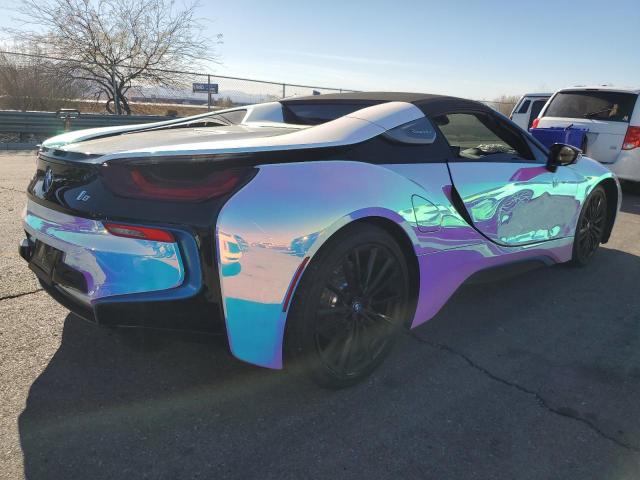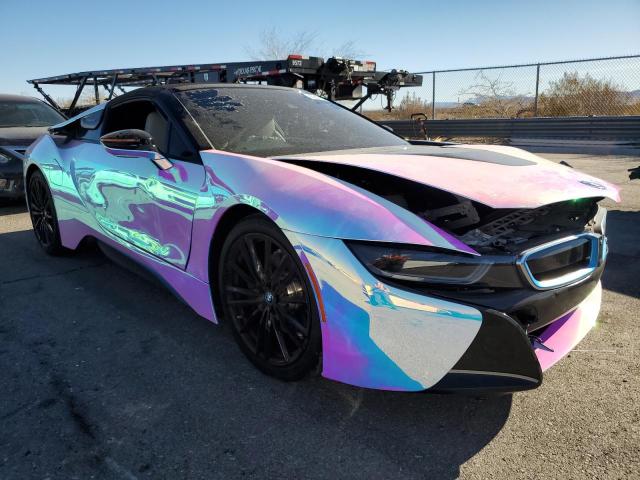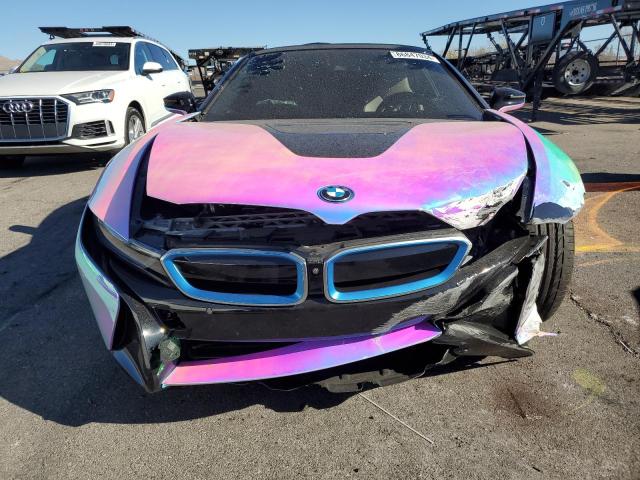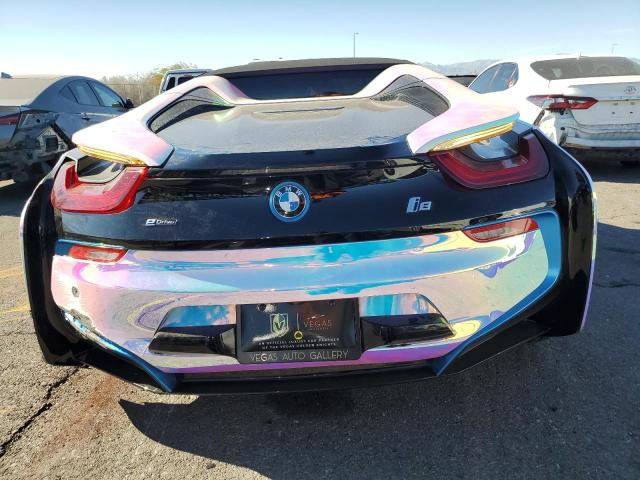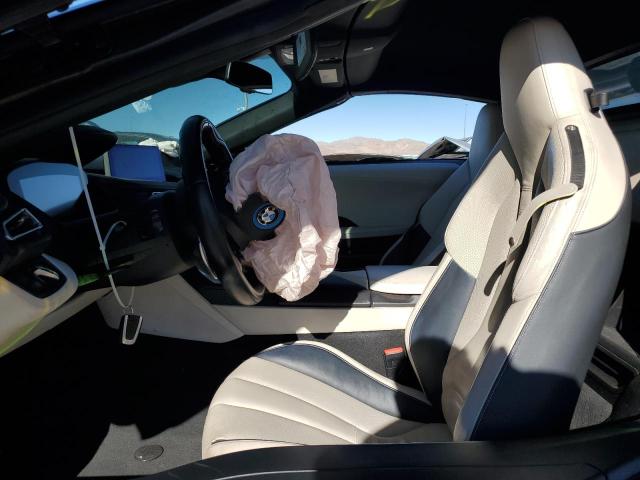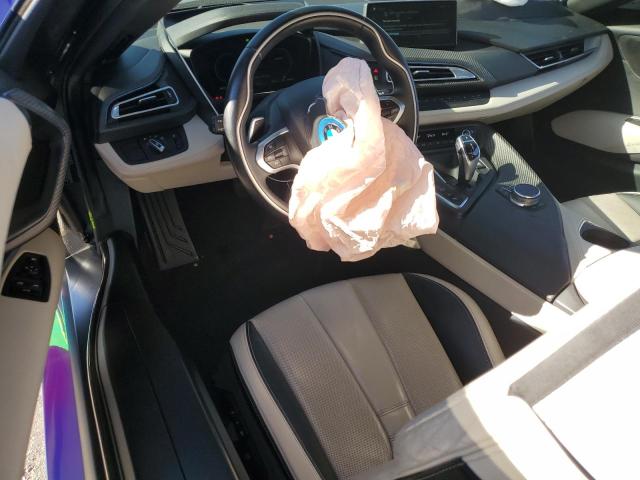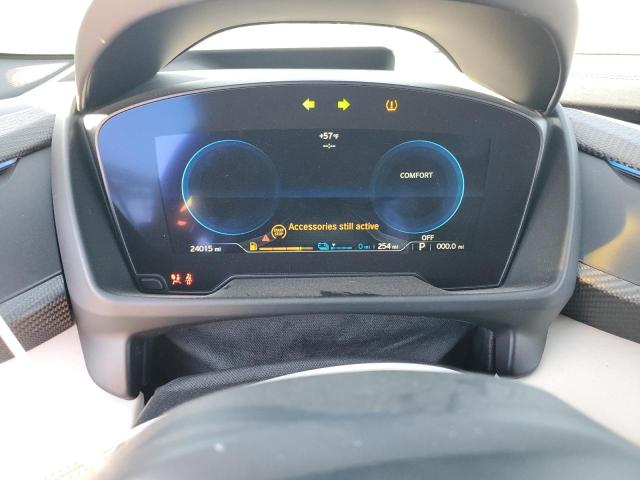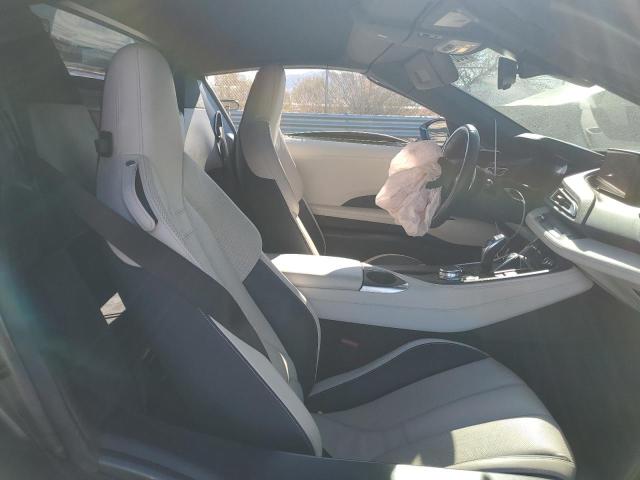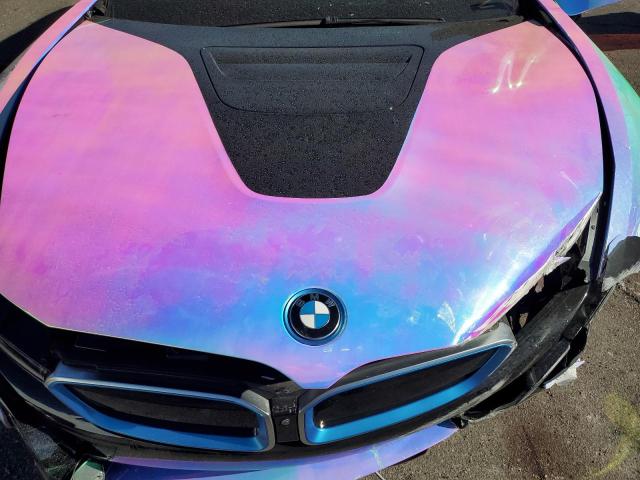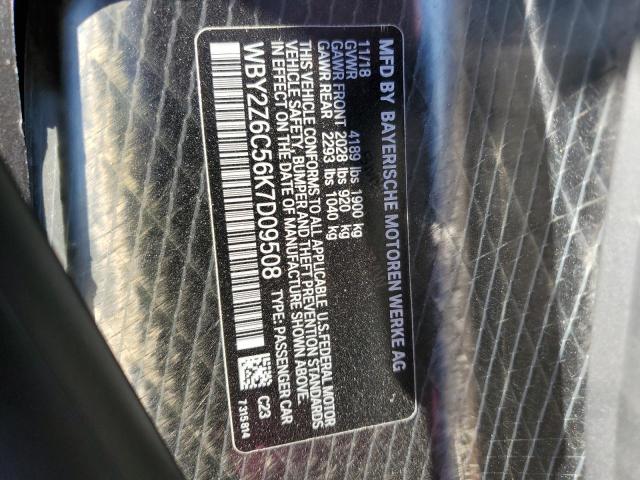2019 BMW I8 | WBY2Z6C56K7D09508
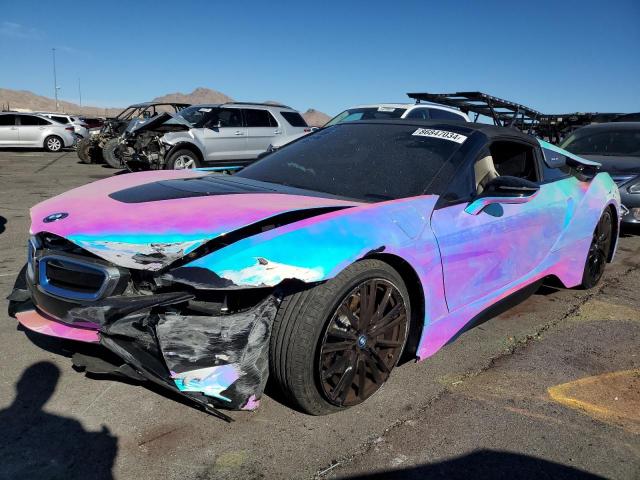 ❯
❯
Specifications
1
~$165,000
Engine: 1.5L Turbocharged I3 (rear) + Electric Motor (front)
Torque: 570 Nm
0–100 km/h: ~4.6 s
The BMW i8 was never meant to chase Nürburgring lap times — it was designed to redefine what a modern sports car could be. Combining a small internal combustion engine with a powerful front-mounted electric motor and an advanced carbon-fiber-reinforced polymer (CFRP) monocoque chassis, the i8 delivered electrified performance with concept car aesthetics.
Despite its modest three-cylinder engine, the i8 could sprint from 0–100 km/h in under 5 seconds, thanks to the instant torque from its electric motor and intelligent AWD system. More importantly, its low weight, aerodynamic body, and near-perfect balance provided a futuristic take on dynamic driving — silent when desired, aggressive when needed.
The butterfly doors, LED laser lights, floating rooflines, and layered interior positioned the i8 visually in supercar territory, while its hybrid drivetrain gave it exclusivity in a category of its own. It wasn't just sporty — it was visionary, and as such, it earns a legitimate place in a sport-focused context not through raw numbers, but through innovation, design, and driving philosophy.
Body Styles
The i8 was available as a 2+2 Coupé and later as a two-seat Roadster with a retractable soft top. Its body combined aerodynamic sculpture and futuristic design, with signature U-shaped LED lights, dihedral (scissor) doors, and layered body panels. The design focused on airflow management and lightweight construction — every surface was functional or aerodynamic.
Built on a carbon-fiber-reinforced plastic (CFRP) passenger cell bonded to an aluminum chassis (BMW's "LifeDrive" architecture), the i8 weighed just ~1,485–1,600 kg, remarkable for a hybrid with AWD. The low center of gravity and nearly perfect weight distribution allowed a sports car feel, despite being a hybrid GT.
Model Name Meaning (Manufacturer)
“i8” stems from BMW’s “i” sub-brand, created for sustainable mobility and electrified innovation. The “8” positions it as a flagship GT-sportscar, above the i3 city car, and on par with 8 Series grand tourers in ambition. The i8 was conceived as a halo for the future – not just in powertrain, but in design, materials, and construction.
Body & Interior Colors and Rims
The i8 was offered in futuristic, often two-tone paint schemes like Protonic Blue with Frozen Grey, Crystal White Pearl with BMW i Blue, Sophisto Grey, and later special editions like E-Copper Metallic and Frozen Black. Roadsters introduced bespoke soft-top tones and exclusive accents like "Accaro" interior themes.
The interior blended sustainable materials with luxury – including lightweight recycled textiles, Eucalyptus wood, and leather tanned with olive leaf extract. The cockpit was asymmetrically sculpted toward the driver, with a digital cluster and floating infotainment screen. Optional trims included ceramic controls and contrasting seat accents in white, brown, or copper.
Wheels included 20" aerodynamic turbine-style alloys, lightweight forged aluminum rims, and optional directional blade-style designs. Wheel options prioritized efficiency and low rolling resistance, but certain versions (e.g. Ultimate Sophisto Edition) featured bespoke dark finishes or colored rim inserts.
Top Expensive Options
- Tera World Interior Package (Eucalyptus wood, blue stitching): ~$2,000
- Harman Kardon Surround Audio: ~$1,500
- Ceramic Control Elements: ~$600
- Adaptive LED Headlights with Laserlight (post-LCI): ~$2,500
- BMW iBlue Seatbelts and Interior Accents: ~$300
- 20" BMW i Light Alloy Turbine Wheels: ~$1,800
- Head-Up Display with Navigation: ~$1,200
- BMW ConnectedDrive Remote App Integration: standard / optional by region
- Frozen Matte Paint (Individual colors): ~$5,000
- Ultimate Sophisto Edition Package (final 200 units): ~$10,000+
vs Competitors
The i8 competed against Tesla Model S Performance, Porsche 911 Carrera 4, Audi R8 (V8), and in spirit, Lexus LC500h. Unlike them, the i8 was neither a raw sports car nor a pure EV — it was a design-forward tech showcase. Against the Tesla, it lacked electric range, but offered higher build quality and sports car proportions. Compared to the 911, it was less visceral but more futuristic and exotic in appearance. The Audi R8 had more performance but lacked plug-in capabilities or sustainable materials.
The i8 stood alone as a hybrid sports GT — optimized for efficiency, balance, and futuristic styling, rather than track performance. It delivered unique cachet for buyers who wanted innovation and exclusivity without sacrificing usability.
Fun Fact
The BMW i8 was the first mass-produced plug-in hybrid sports car with AWD, and it used an engine smaller than a MINI Cooper to achieve supercar-level acceleration. Despite having “only” 374 hp, its clever packaging and torque distribution made it faster 0–100 km/h than a contemporary Porsche 911 Carrera.
Lot Details
-
Sale Date21/May/2025
-
Lot Number86847034
-
Sale document
-
Location
-
Odometer24,015 miles (38,648 km)
-
Primary Damage:FRONT END
-
Secondary DamageREAR END
-
Seller
-
Fuel
-
Engine Type1.5L 3
-
Transmission
-
Drive Type
-
Color
Final Bid BMW i8 (2019)
$22,700
$47,563
$72,500
Specifications
1
~$165,000
Torque:
0–100 km/h:
The BMW i8 was never meant to chase Nürburgring lap times — it was designed to redefine what a modern sports car could be. Combining a small internal combustion engine with a powerful front-mounted electric motor and an advanced carbon-fiber-reinforced polymer (CFRP) monocoque chassis, the i8 delivered electrified performance with concept car aesthetics.
Despite its modest three-cylinder engine, the i8 could sprint from 0–100 km/h in under 5 seconds, thanks to the instant torque from its electric motor and intelligent AWD system. More importantly, its low weight, aerodynamic body, and near-perfect balance provided a futuristic take on dynamic driving — silent when desired, aggressive when needed.
The butterfly doors, LED laser lights, floating rooflines, and layered interior positioned the i8 visually in supercar territory, while its hybrid drivetrain gave it exclusivity in a category of its own. It wasn't just sporty — it was visionary, and as such, it earns a legitimate place in a sport-focused context not through raw numbers, but through innovation, design, and driving philosophy.
Body Styles
The i8 was available as a 2+2 Coupé and later as a two-seat Roadster with a retractable soft top. Its body combined aerodynamic sculpture and futuristic design, with signature U-shaped LED lights, dihedral (scissor) doors, and layered body panels. The design focused on airflow management and lightweight construction — every surface was functional or aerodynamic.
Built on a carbon-fiber-reinforced plastic (CFRP) passenger cell bonded to an aluminum chassis (BMW's "LifeDrive" architecture), the i8 weighed just ~1,485–1,600 kg, remarkable for a hybrid with AWD. The low center of gravity and nearly perfect weight distribution allowed a sports car feel, despite being a hybrid GT.
Model Name Meaning (Manufacturer)
“i8” stems from BMW’s “i” sub-brand, created for sustainable mobility and electrified innovation. The “8” positions it as a flagship GT-sportscar, above the i3 city car, and on par with 8 Series grand tourers in ambition. The i8 was conceived as a halo for the future – not just in powertrain, but in design, materials, and construction.
Body & Interior Colors and Rims
The i8 was offered in futuristic, often two-tone paint schemes like Protonic Blue with Frozen Grey, Crystal White Pearl with BMW i Blue, Sophisto Grey, and later special editions like E-Copper Metallic and Frozen Black. Roadsters introduced bespoke soft-top tones and exclusive accents like "Accaro" interior themes.
The interior blended sustainable materials with luxury – including lightweight recycled textiles, Eucalyptus wood, and leather tanned with olive leaf extract. The cockpit was asymmetrically sculpted toward the driver, with a digital cluster and floating infotainment screen. Optional trims included ceramic controls and contrasting seat accents in white, brown, or copper.
Wheels included 20" aerodynamic turbine-style alloys, lightweight forged aluminum rims, and optional directional blade-style designs. Wheel options prioritized efficiency and low rolling resistance, but certain versions (e.g. Ultimate Sophisto Edition) featured bespoke dark finishes or colored rim inserts.
Top Expensive Options
- Tera World Interior Package (Eucalyptus wood, blue stitching): ~$2,000
- Harman Kardon Surround Audio: ~$1,500
- Ceramic Control Elements: ~$600
- Adaptive LED Headlights with Laserlight (post-LCI): ~$2,500
- BMW iBlue Seatbelts and Interior Accents: ~$300
- 20" BMW i Light Alloy Turbine Wheels: ~$1,800
- Head-Up Display with Navigation: ~$1,200
- BMW ConnectedDrive Remote App Integration: standard / optional by region
- Frozen Matte Paint (Individual colors): ~$5,000
- Ultimate Sophisto Edition Package (final 200 units): ~$10,000+
vs Competitors
The i8 competed against Tesla Model S Performance, Porsche 911 Carrera 4, Audi R8 (V8), and in spirit, Lexus LC500h. Unlike them, the i8 was neither a raw sports car nor a pure EV — it was a design-forward tech showcase. Against the Tesla, it lacked electric range, but offered higher build quality and sports car proportions. Compared to the 911, it was less visceral but more futuristic and exotic in appearance. The Audi R8 had more performance but lacked plug-in capabilities or sustainable materials.
The i8 stood alone as a hybrid sports GT — optimized for efficiency, balance, and futuristic styling, rather than track performance. It delivered unique cachet for buyers who wanted innovation and exclusivity without sacrificing usability.
Fun Fact
The BMW i8 was the first mass-produced plug-in hybrid sports car with AWD, and it used an engine smaller than a MINI Cooper to achieve supercar-level acceleration. Despite having “only” 374 hp, its clever packaging and torque distribution made it faster 0–100 km/h than a contemporary Porsche 911 Carrera.



